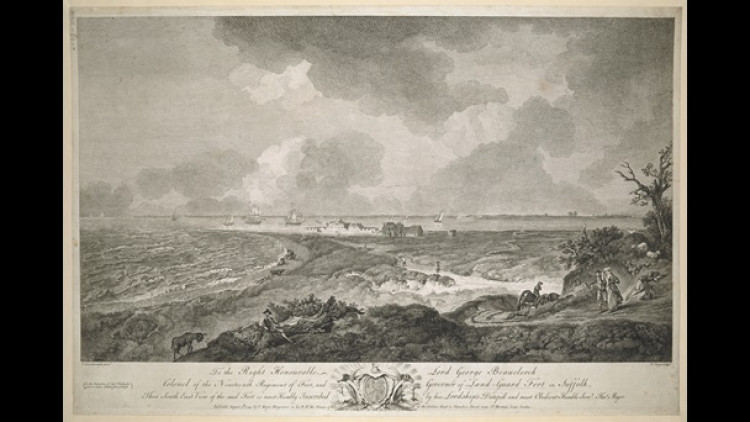Felixstowe history: A brief history of Landguard Fort
By Amber Markwell 10th Jul 2022
By Amber Markwell 10th Jul 2022

This article first appeared exclusively for subscribers in the Felixstowe Nub newsletter on Friday morning. Sign up for free today.
Felixstowe Nub News delves into the history of Landguard Fort.
It is interesting to note that the name of "Landguard" is a relatively modern name. According to Major J. H. Leslie, the area has gone by different names throughout history. The name in the Domesday Survey was Langestuna.
What we know today as Landguard Fort first started taking shape in 1540. Originally named Langer Fort and the area surrounding it being names Lunger Pointe, its initial fortifications were a few earthworks and blockhouse.
The year previous, John de Vere, Earl of Oxford, and Henry Bourchier, Earl of Essex, went to inspect the sea coast and to report on how they could place the area in a state of defence against an enemy.
They wrote the following report: "There is between that h[aven and] Colnes being on Suffolk syde a point called Lan[ger Point] where ther maye arryve and londe 20 thousand [men]… if it might lyke the [King's] highenes that a substanciall Blokehowse myght b[e buylt]… it wolde keape all that streame on both sydis from [any] dawnger."
It was not until 1621, 81 years later, that its recognisable shape took form. In that year, King James I ordered the construction of a square fort with bulwarks at each corner.
The fortifications will be put to the test in 1667 when the Dutch, under Michiel de Ruyter, landed 2,000 men on Felixstowe beach and advanced to the fort.
However, they were driven back by Nathaniel Darrel and his garrison of 400 musketeers of the Duke of York & Albany's Maritime Regiment and 100 artillerymen with 54 cannon.
Throughout the years, there have been changes to the look of the fort. However, its biggest change came in the 1870s where the interior barracks were rebuilt to a keep-like design.
Two landscapes were commissioned in around 1755 from Thomas Gainsborough for the Governor's Quarters at Landguard by his friend Philip Thicknesse, Lt. Governor of Landguard Fort.

However, these landscapes were destroyed by the damp conditions of the Fort.
During the Napoleonic Wars, the Army was concerned with the strength and combat readiness of the Fort. 1804 steps were taken to extend and strengthen it. At the same time, badly disciplined garrison drank the gin found on a captured smugglers' boat and four died presumably of alcohol poisoning.
During World War II, the Fort was used as one of the balloon launch sites of Operation Outward. This project involved attacking Germany by means of free-flying hydrogen balloons that carried incendiary devices or trailing steel. Many thousands of the balloons were launched between 1942 and 1944.
The Army left the Fort in 1957 and is currently now open to the public for educational visits to learn its rich history.
Send us any famous Felixstowe residents you find interesting, or any story you wish to send us by using the black 'Nub It' button.
CHECK OUT OUR Jobs Section HERE!
felixstowe vacancies updated hourly!
Click here to see more: felixstowe jobs
Share:


